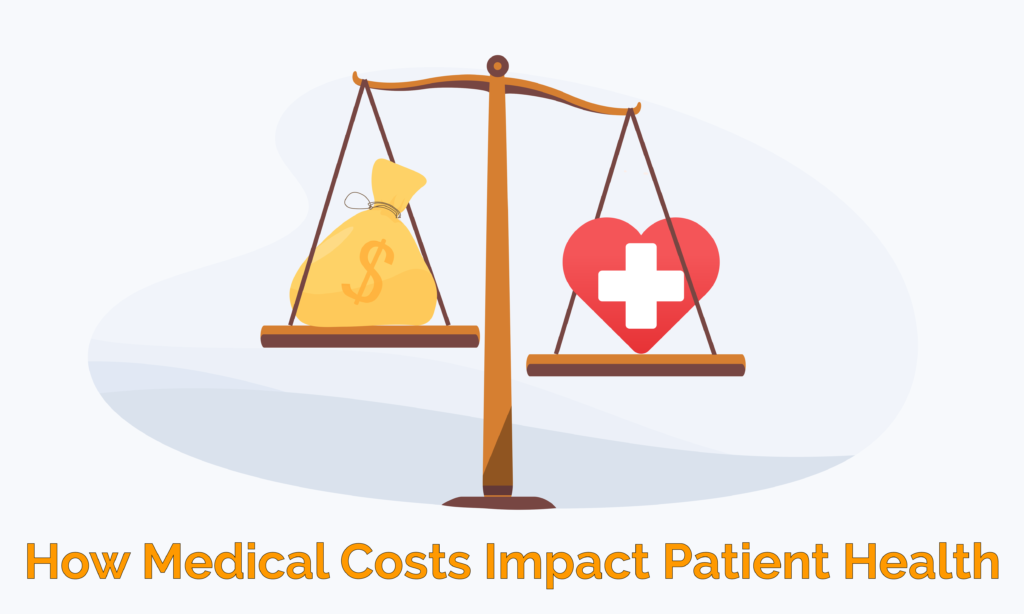The United States tops the list as having the costliest healthcare system in the world. A report by the Center for Medicare and Medicaid Services (CMS) confirms that the total healthcare expenditures for 2021 have reached $4.3 trillion. A year before that, roughly $12,530 is spent per person in 2020 compared to $150 per person in 1960. By 2027, it is estimated to reach $6 trillion.
The rising cost of healthcare along with high inflation altered consumer behaviors and negatively impacted patient health, especially for those with chronic illnesses, whose numbers have been increasing these last few years.
So why have health expenditures rapidly increased?
The massive increase in healthcare spending can be attributed to several factors. The more prominent causes stem from government policies and the rise of chronic illnesses brought on by an aging population as well as lifestyle changes.
New programs bolstered usage
Over the years, healthcare spending has increased due to increased usage and intensity of healthcare services. New programs like Medicare and Medicaid were created for those who cannot afford private health insurance. As more people were covered, they naturally sought healthcare services.
In 2012, there were 131 million ER visits meaning one out of five adults visited the emergency department for that year. Medicaid has even placed senior citizens in expensive nursing home facilities. In addition, providers are also investing in new and expensive technologies.
This increased demand prompted providers to also increase their fees. As a result, Americans are paying a higher fee although they use the same amount of healthcare services as those from other developed nations according to a study in Health Affairs.
Introduction of new and expensive drugs
The same study also looked into drug prices, which tripled between 1997 to 2007. This was prompted by consumers demanding more choices from providers. Pharmaceutical companies introduced new types of prescription drugs, which were marketed straight to the consumers and increased demand.
From six drugs in 1997 that reached $1 billion in sales to 52 drugs in 2006. Since then, the rate of increase in prescription drug prices has overtaken the general inflation rate. From 2019 to 2020, the increase tripled to 4.8% compared to the inflation rate of 1.3%. During this period, the price of roughly 80 brand-name drugs increased by more than 16%.
Increase in age and chronic illnesses
From the years 2000 to 2020, the 65-plus patient population increased by 60% and it is expected to increase by another 44% from 2020 to 2040. As the population ages, the demand for healthcare services also increases.
More than 50% of American adults are diagnosed with at least one chronic condition and accounting for 86% of total healthcare spending. With increased age comes an increase in chronic illnesses like diabetes, heart disease, lower and back pain, and blood pressure. Chronic illnesses are not only difficult to manage, but also very expensive.
Hence, the sickest 5% of the population consumed half of the total healthcare costs in 2019 while the healthiest half only accounted for 3%. Physicians have been doing a great job in saving lives but it comes at a high cost. Patients in the last year of their lives account for 25% of the Medicare budget.
Additional administrative costs
Modernization and changes in Medicare like Medicare Part D and Medicare Advantage programs brought the number of covered people to 28 million by 2022. Along with increased usage, there is also an increase in administrative costs. With so many types of payers in the market other than Medicare and Medicaid, administrative costs have increased to about 15% to 25% of total spending.
About 50% of the administrative costs are driven by complex billing procedures. Add to that the different requirements, procedures, and forms to fill by different payers. In 2018, a JAMA study found that 14.5% of primary care revenue is spent on administrative billing costs.
How is patient health impacted?
Because of the rising healthcare cost along with the increasing cost of living, people are making choices that negatively impact their health, particularly among low-income households and the uninsured.
1. Delayed care or skipped appointments
Rising transport and medical costs have discouraged patients to seek needed care. A missed visit could be detrimental to those with chronic conditions, which if left untreated could easily escalate leading to an ER visit or costly hospitalization. Delayed care is also driving costs up when patients escalate, which could have been prevented with timely care.
2. Delayed use of essential medications or rationing them
Patients are looking for cheaper medications. With poor adherence to prescribed medications, symptoms or conditions can escalate. Recovery time is also extended as well as the suffering of the patient.
3. Opting out of insurance coverage
Rising out-of-pocket costs, co-pays, and high premiums are prompting patients to opt-out of their private insurance. Without coverage, healthcare providers believe that fewer medical visits and screenings will adversely affect the diagnosis and treatment of a disease.
4. Unhealthy lifestyle
As patients skip their doctor’s appointments, they are also unable to receive the education and support they need to manage their conditions. As a result, patients revert to poor eating habits, lack exercise, and are unable to properly self-manage their condition.
5. Increase in anxiety and depression
Mental health treatments have become more expensive in recent years. Patients with anxiety and depression are unable to obtain the care they need. Some are also unable to seek care because of a shortage of mental health providers and a lack of access, especially in rural and underserved areas.
6. Reduced quality of life
Patients are forced to make trade-offs to pay for their care. Coupled with inflation, many Americans are worried about their inability to pay for needed healthcare in the next six months as prices of food, gas, and electricity continue to soar.
A looming health crisis
To sum up, the rising medical costs are affecting people’s health. Fewer medical visits combined with poor lifestyle choices could lead to a long-term health crisis, which will impact the most vulnerable patient population. To avert this crisis that will further burden the healthcare system, interventions at both the local and national levels are urgently needed.
The pharmaceutical industry can play a big role in averting this looming health crisis. A recent physician poll by Medefield lists some noteworthy suggestions from various healthcare providers like lowering or capping medicine prices, reducing profit margins, supporting patients that are unable to afford their medicines and providing support services like patient education and counseling.
Cost-savings opportunities
The rising medical costs and inflation are also hurting physician practices that are unable to innovate their care delivery and optimize their care due to a lack of resources. Physicians need to seize opportunities for cost-savings and operational efficiencies that will benefit themselves and their patients.
For patients with chronic conditions, Medicare’s Chronic Care Management (CCM) and Remote Patient Monitoring (RPM) enable providers to expand access to their care and capitalize on the reimbursements for a new revenue stream.
Ascent Care Partners (ACP) can help providers enroll their eligible patients in CCM and RPM programs without making a huge capital investment and risking an increased overhead. We have the technology, infrastructure, and staffing to care for your patients on your behalf. Our turnkey virtual care solutions provide high-touch care, monitoring, and care coordination services that help patients stay healthy and out of the hospital.
We work with the following providers:
- Primary Care Physicians
- Family Practice Physicians
- Internists
- Physician Assistants
- Nurse Practitioners
- Gerontologists
- Non-Interventional Cardiologists
- Endocrinologists
- Wound Care Doctors
- and other providers



